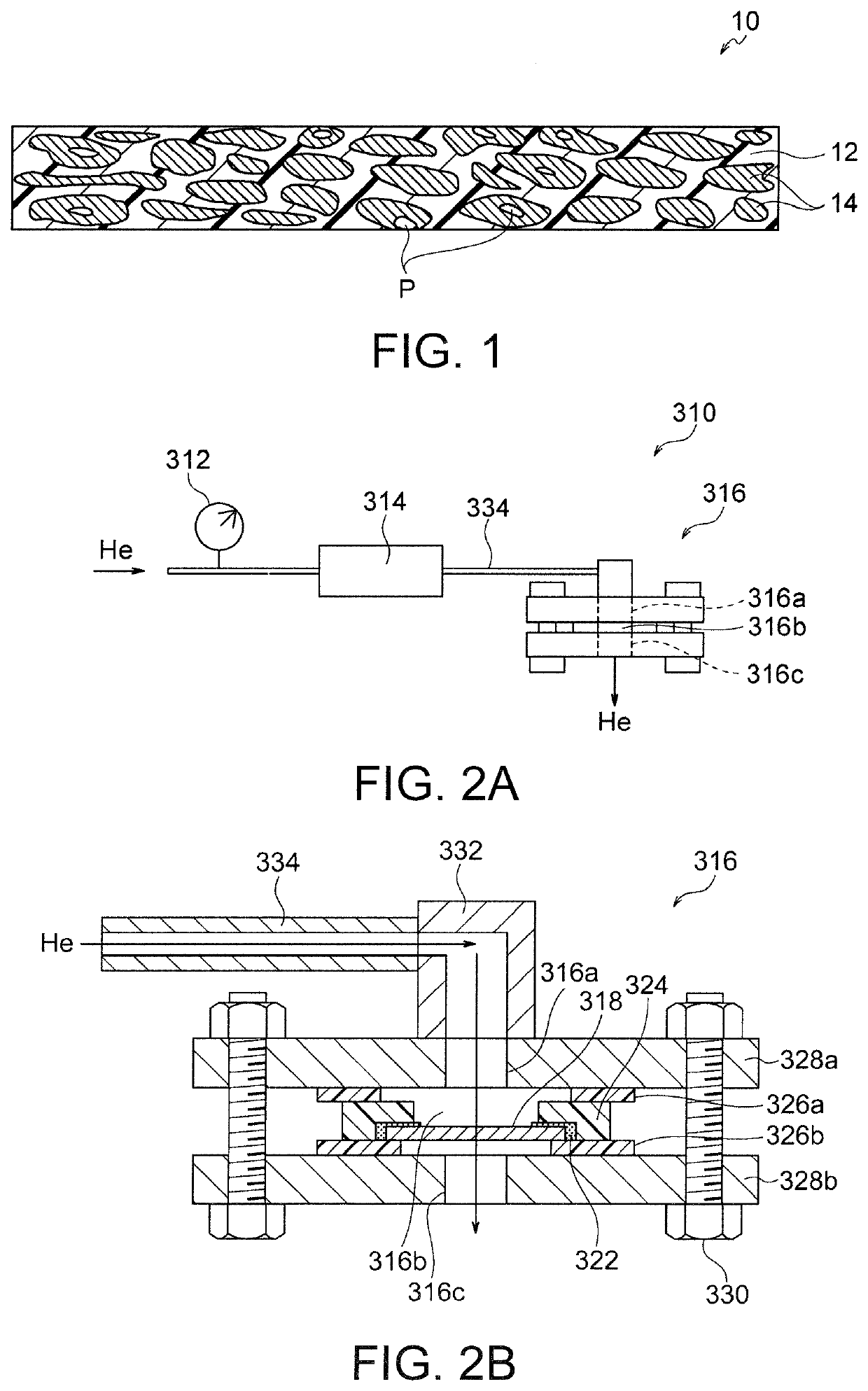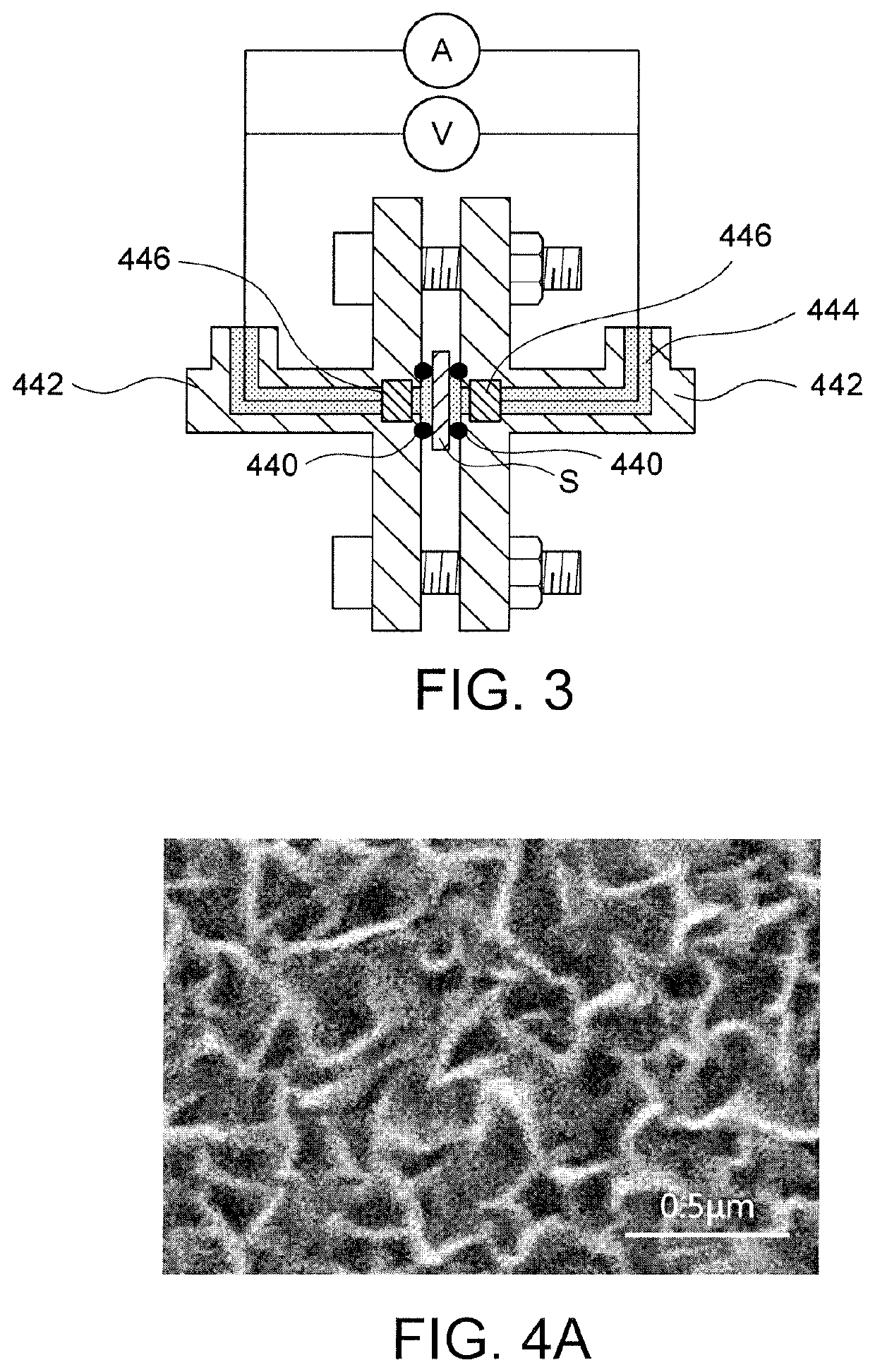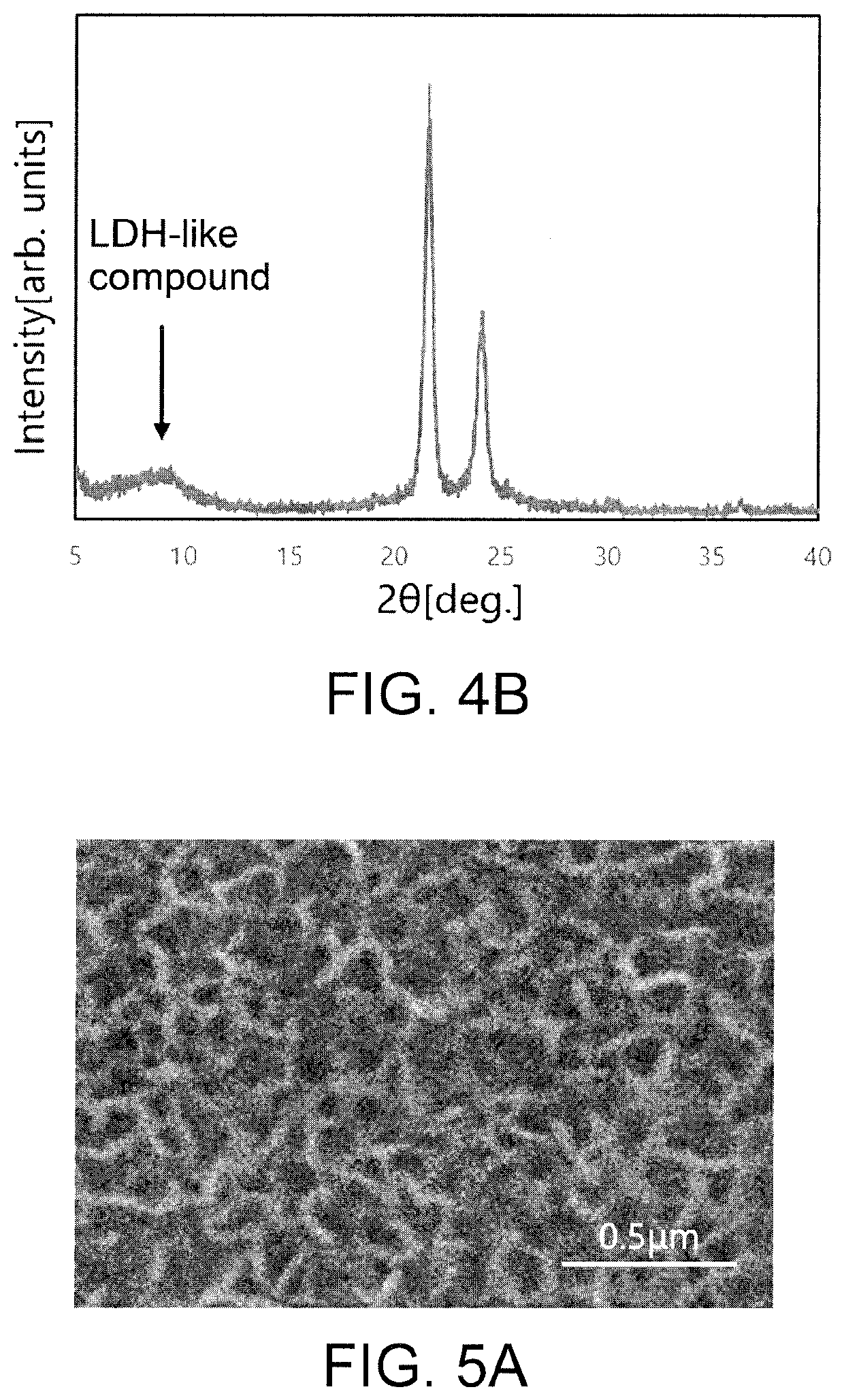Hydroxide ion conductive separator and zinc secondary battery
a technology of ion conductive separator and secondary battery, which is applied in the direction of cell components, electrochemical generators, and nickel accumulators, etc., can solve the problems of shortening the repeated charge/discharge life and shortening the circuit, and achieves short circuits, high hydroxide ion conductivity, and the effect of preventing dendrite short circuits
- Summary
- Abstract
- Description
- Claims
- Application Information
AI Technical Summary
Benefits of technology
Problems solved by technology
Method used
Image
Examples
examples
[0050]The invention will be illustrated in more detail by the following examples. The method for evaluating the hydroxide ion-conductive separators produced in the following examples was as follows.
Evaluation 1: Observation of Surface Microstructure
[0051]The surface microstructure of the hydroxide ion-conductive separator was observed using a scanning electron microscope (SEM, JSM-6610LV, manufactured by JEOL Ltd.) at an acceleration voltage of 10 to 20 kV.
Evaluation 2: STEM Analysis of Layered Structure
[0052]The layered structure of the hydroxide ion-conductive separator was observed using a scanning transmission electron microscope (STEM) (product name: JEM-ARM200F, manufactured by JEOL Ltd.) at an acceleration voltage of 200 kV.
Evaluation 3: Elemental Analysis Evaluation (EDS)
[0053]A surface of the hydroxide ion-conductive separator was subjected to compositional analysis using an EDS analyzer (device name: X-act, manufactured by Oxford Instruments), to calculate the composition ...
example 1
(1) Preparation of Porous Polymer Substrate
[0063]A commercially available polyethylene microporous membrane with a porosity of 50%, a mean pore size of 0.1 μm, and a thickness of 20 μm was prepared as a porous polymer substrate and cut out into a size of 2.0 cm×2.0 cm.
(2) Titania Sol Coating on Porous Polymer Substrate
[0064]The substrate prepared by procedure (1) above was coated with a titanium oxide sol solution (M6, manufactured by Taki Chemical Co., Ltd.) by dip coating. Dip coating was performed by immersing the substrate in 100 ml of the sol solution and pulling it out perpendicularly, followed by drying at room temperature for 3 hours.
(3) Production of Raw Material Aqueous Solution
[0065]As raw materials, magnesium nitrate hexahydrate (Mg(NO3)2.6H2O, manufactured by KANTO CHEMICAL CO., INC.) and urea ((NH2)2CO, manufactured by Sigma-Aldrich Corporation) were prepared. The magnesium nitrate hexahydrate was weighed to 0.015 mol / L and put into a beaker, and deionized water was ad...
example 2
[0077]A hydroxide ion-conductive separator was produced and evaluated in the same manner as in Example 1 except that the raw material aqueous solution was produced as follows in procedure (3) above, and the temperature for the hydrothermal treatment was changed to 90° C. in procedure (4) above.
(Production of Raw Material Aqueous Solution)
[0078]As raw materials, magnesium nitrate hexahydrate (Mg(NO3)2.6H2O, manufactured by KANTO CHEMICAL CO., INC.) and urea ((NH2)2CO, manufactured by Sigma-Aldrich Corporation) were prepared. The magnesium nitrate hexahydrate was weighed to 0.03 mol / L and put into a beaker, and deionized water was added thereto so that the total amount was 75 ml. After stirring the solution obtained, urea weighed at a ratio urea / NO3-(molar ratio) of 8 was added into the solution, followed by further stirring, to obtain a raw material aqueous solution.[0079]Evaluation 1: The SEM image of the surface microstructure of the hydroxide ion-conductive separator obtained in E...
PUM
| Property | Measurement | Unit |
|---|---|---|
| ion conductivity | aaaaa | aaaaa |
| interlayer distance | aaaaa | aaaaa |
| 2θ | aaaaa | aaaaa |
Abstract
Description
Claims
Application Information
 Login to View More
Login to View More - R&D
- Intellectual Property
- Life Sciences
- Materials
- Tech Scout
- Unparalleled Data Quality
- Higher Quality Content
- 60% Fewer Hallucinations
Browse by: Latest US Patents, China's latest patents, Technical Efficacy Thesaurus, Application Domain, Technology Topic, Popular Technical Reports.
© 2025 PatSnap. All rights reserved.Legal|Privacy policy|Modern Slavery Act Transparency Statement|Sitemap|About US| Contact US: help@patsnap.com



